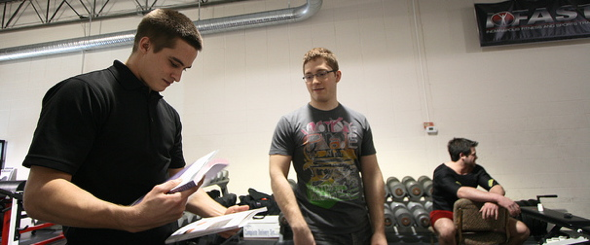 Effective coaching of clients and athletes isn’t a rigid, cookie-cutter process.
Effective coaching of clients and athletes isn’t a rigid, cookie-cutter process.
When you get down to the heart of it, high-quality coaching and training can be boiled down to three key components:
- Assessment
- Program Design, and
- Coaching
Let’s begin by looking at the individual components, and then how their interplay manifests itself into a holistic and effective training regimen.
The Assessment
The assessment process is the starting point for your training. I’ve said it before and I’ll say it again – if you’re not assessing, you’re guessing!
The initial assessment should do several things for you:
- Determine what your client does well.
- Determine what your client does not do well, along with how those limitations will influence your programming.
- Injury history.
- The current goal(s) for your client.
With the rise of the FMS, products like Assess and Correct, and everything in between, I think more and more trainers and coaches are realizing just how powerful an assessment really is.
But there’s more to it than just an initial assessment. Intake evals are great, don’t get me wrong, but we can and should be evaluating our clients and athletes daily.
How are they moving today?
What is their energy level like?
How motivated are they to train?
The better we assess our clients on a day-to-day basis, the better our results will become.
Program Design
Once we’ve determined the needs and goals of a given client, it’s time to develop their training program.
At this time, we should be asking ourselves several questions:
- What set/rep range is preferred given their goals?
- What kind of rest periods should they be adhering to?
- What exercises are good for them based on their needs, goals, etc.?
When designing a program for a new client, I typically have two goals:
- Do my best to give them what they want. If their goal is to shed body fat, I want to give them higher rep ranges, shorter rest periods, and make them feel like they worked out. If their goal is to powerlift, even if they’re a total train-wreck I like to give them a few things to at least feel like they’re still a powerlifter.
- Give them what I know they need to improve upon their movement foundation. Regardless of whether someone’s goal is to get lean, add muscle, or get stronger, we can always improve upon how they move and feel. At least initially, they may not be doing the most exotic and sexy program knownto man. But if we educate our clients and let them know how quality movement will not only keep them healthy but improve their performance as well, many are more than willing to buy in.
Now that the program has been developed, it’s time for the final component – high-quality coaching.
Coaching
One of the things I’ve mentioned numerous times is that you can develop the best program known to man – the ideal program for the person standing in front of you – but if you can’t get them to perform the exercises correctly, they’re not going to get maximal benefit!
Quite simply, can you get them to do what you want?
Let’s say you’ve written RDL’s into a clients’ workout. You know they have knee pain, so they need more hip-dominant lifts in their programming.
But are you sure they’re doing it correctly? Are they letting their body weight drift forward? Are they on their toes? Is the bar drifting in front of them?
All of these are compensations and ways your clients will cheat to make the exercise easier!
I was having a discussion with Mike Ronacarati the other day (Bill’s PT student), and he made a great statement. We were discussing single-leg training, and how many people assume that if they have single-leg work in their programming, everything is going to be perfect – puppies and balloons everyday.
His comment was simple:
“You can’t just do it – do it right!”
I really couldn’t have said it better myself. Write the program, but then make sure they execute the program to your liking.
Bringing it All Together
The graphic below should help illustrate how these three componets work together to influence the overall training program:
 Effective training is not only a continuous, but organic, process.
Effective training is not only a continuous, but organic, process.
Assess your clients initially, but before every training session as well.
Make necessary adjustments to their program based on injuries, motivation and energy level, overall preparedness, etc.
Continually refine and improve the quality of their movement to not only help them achieve their goals, but move and feel better as a by-product of their training.
When done with care and caution, the results you can get with your clients and athletes is amazing.
If you’d like to improve the quality of your training and coaching, be sure to pick up a copy of the Bulletproof Knees and Back Seminar DVD’s. Not only do I cover in-depth the topics listed above, but how functional anatomy is also the foundation for everything else.
Stay strong
MR
